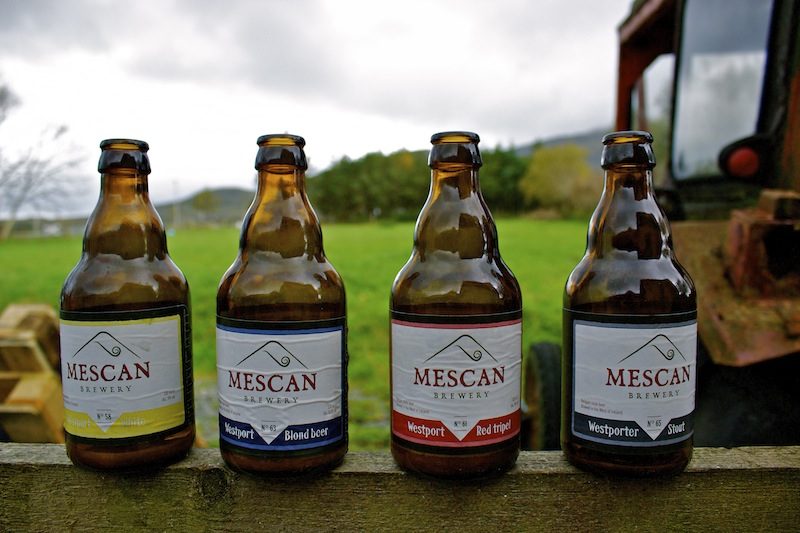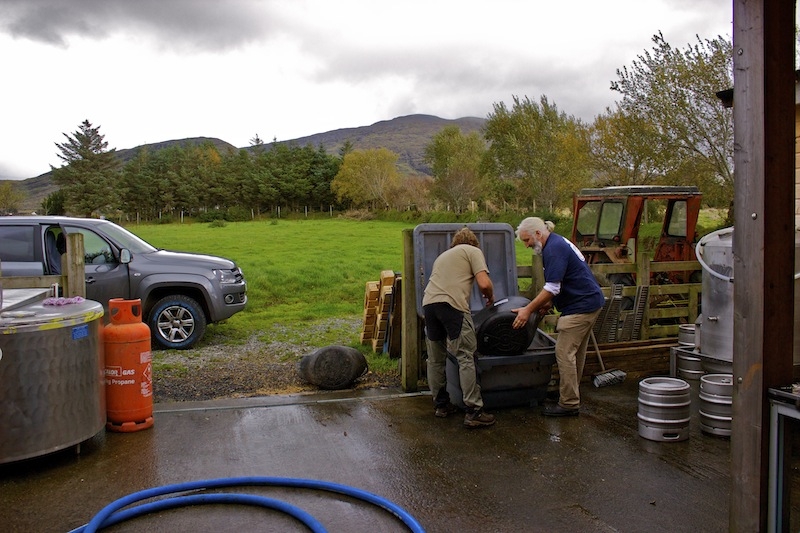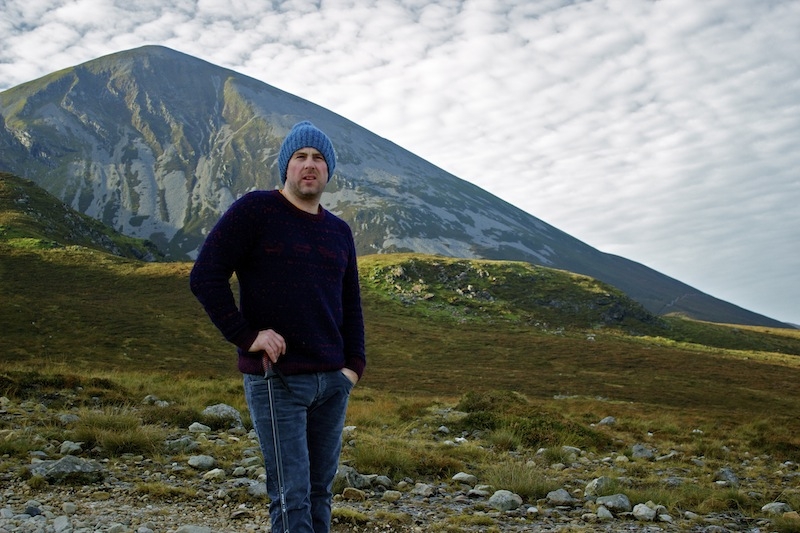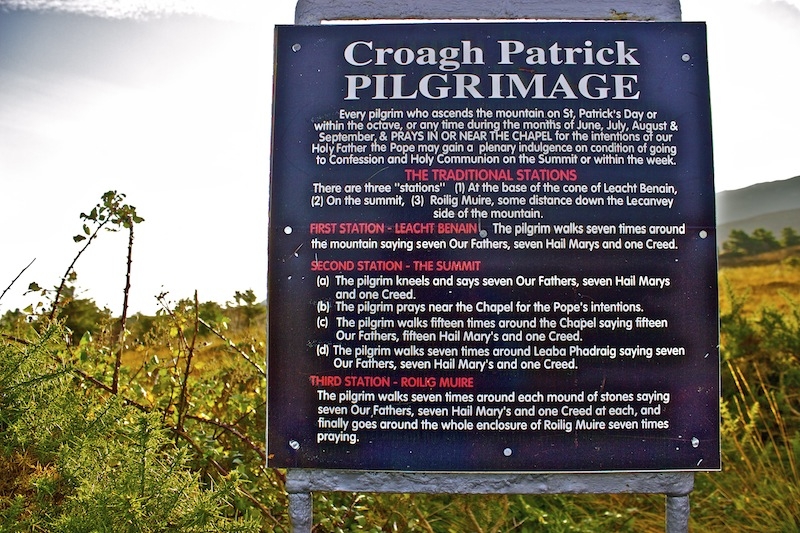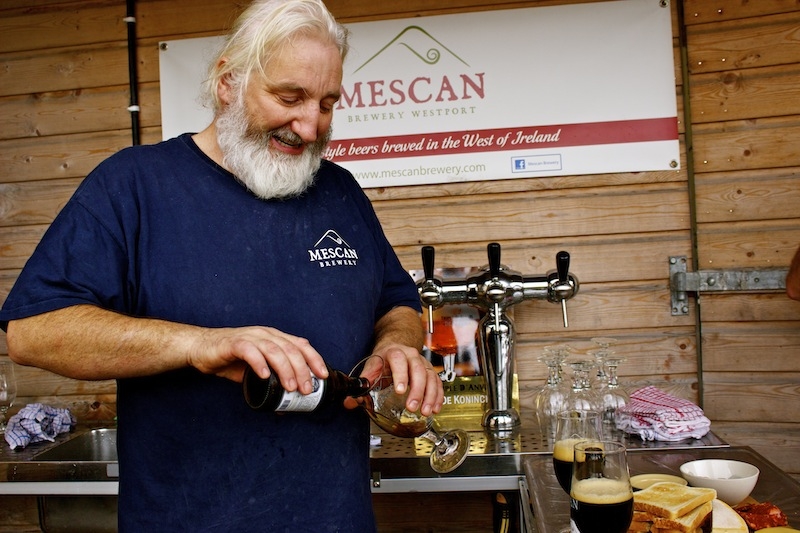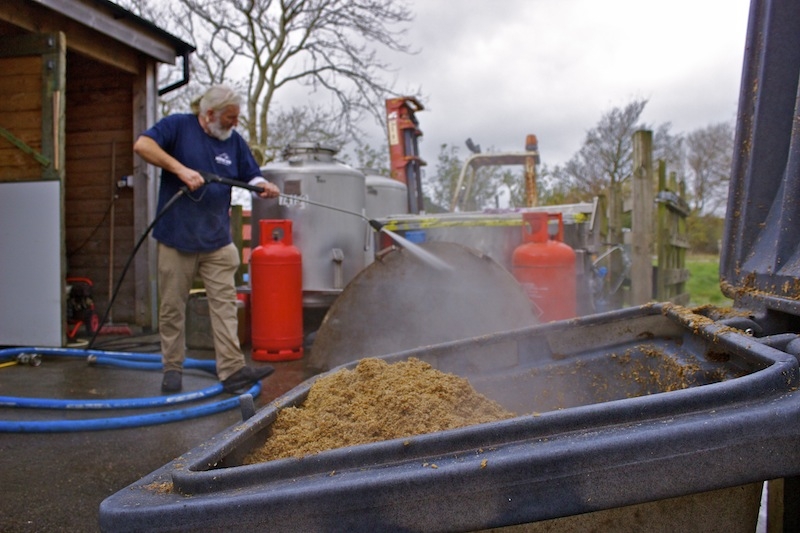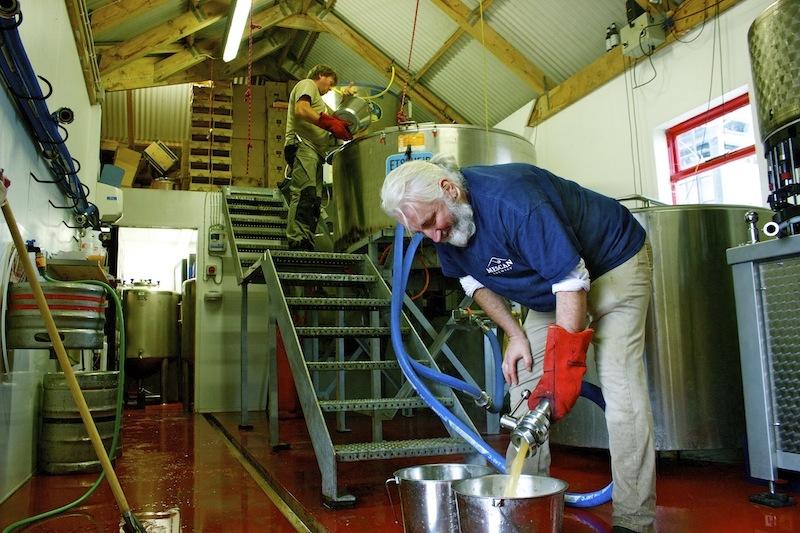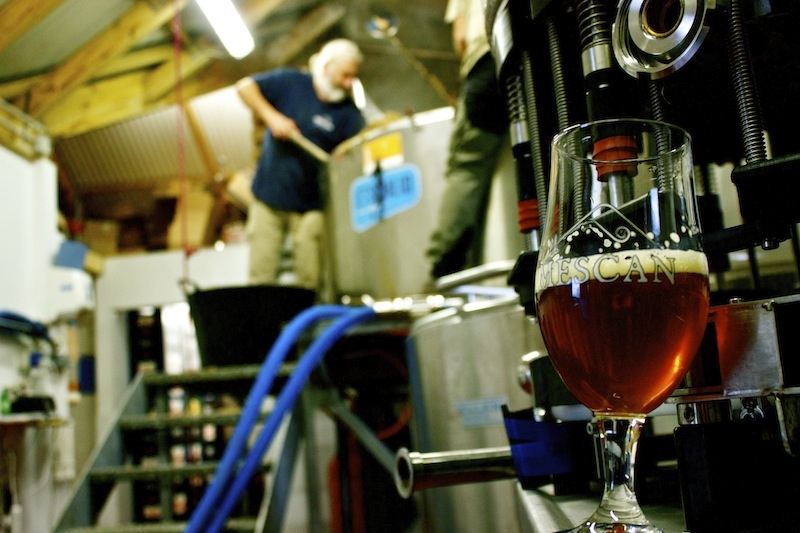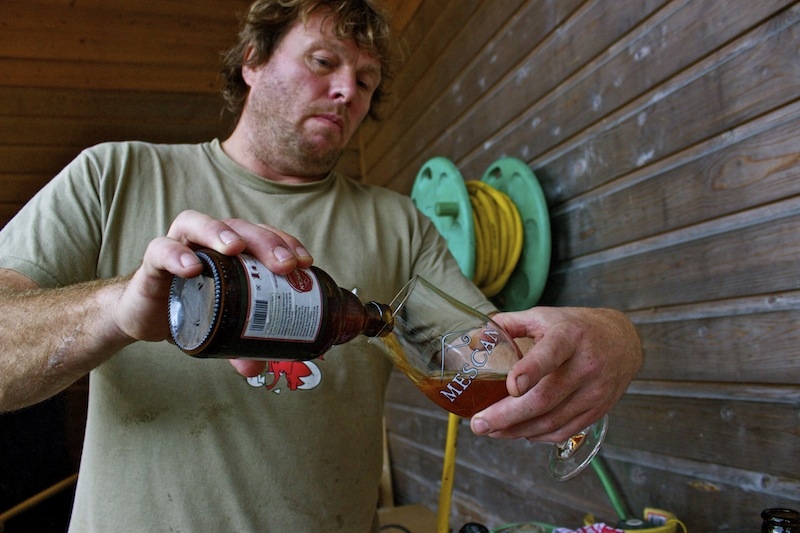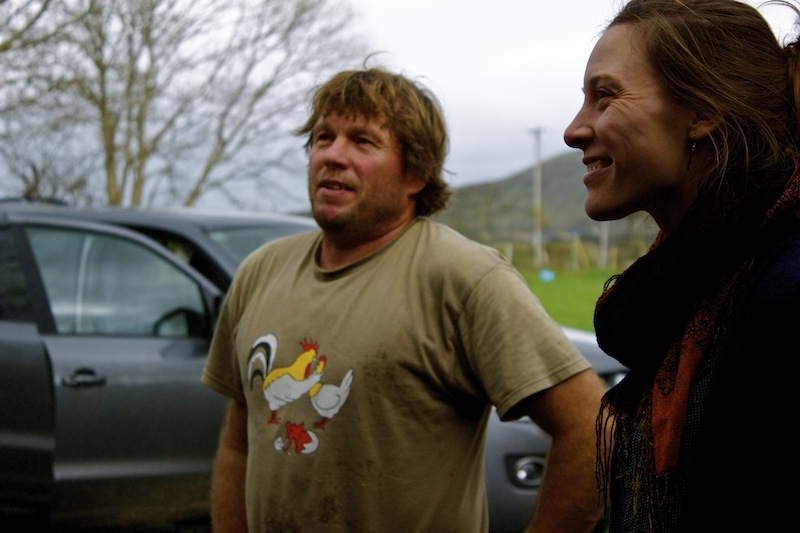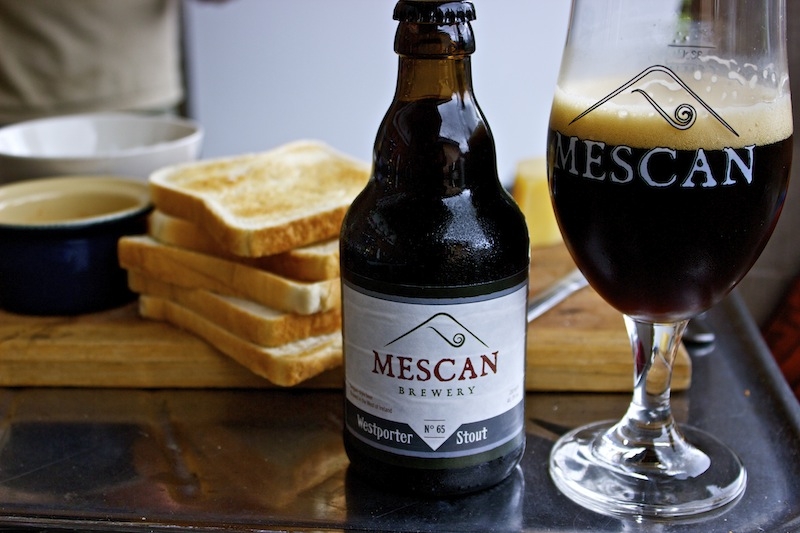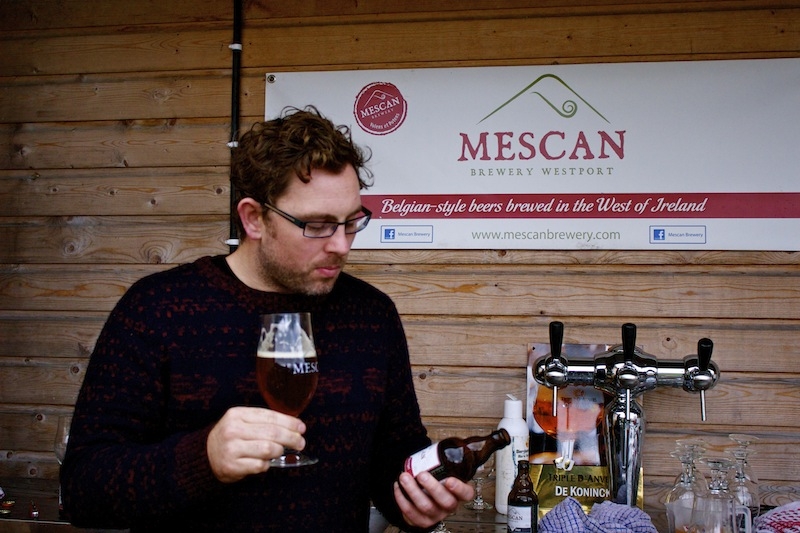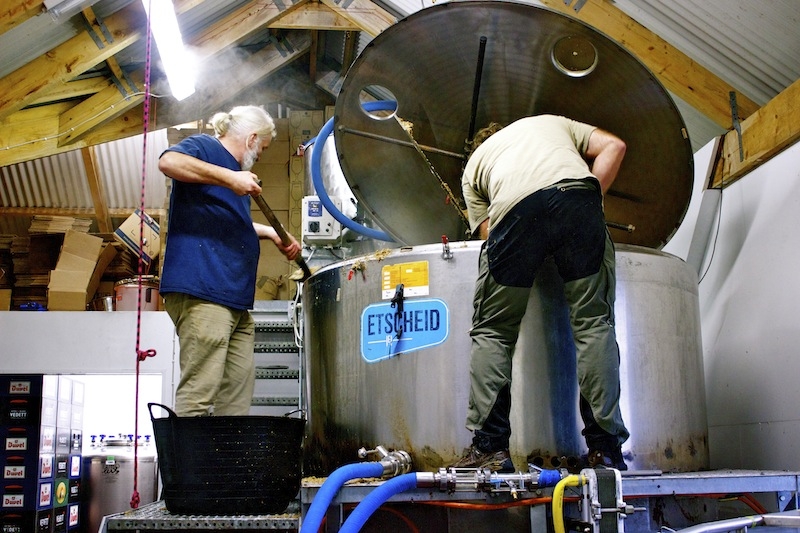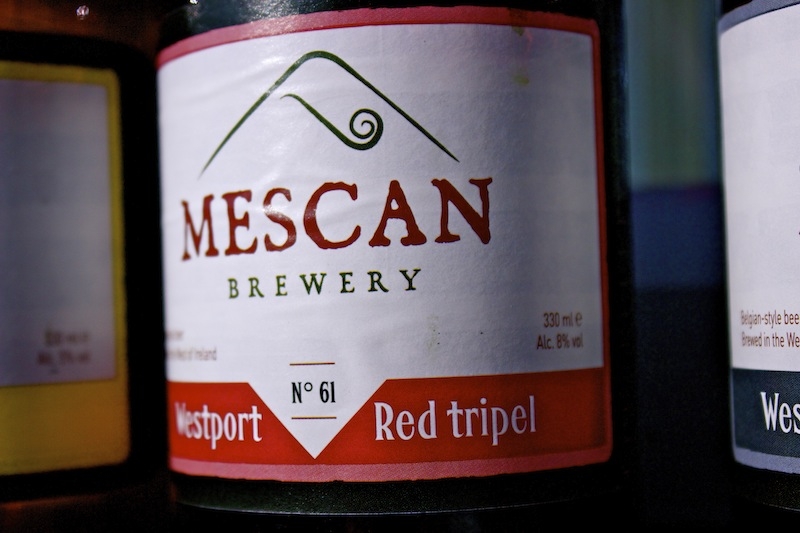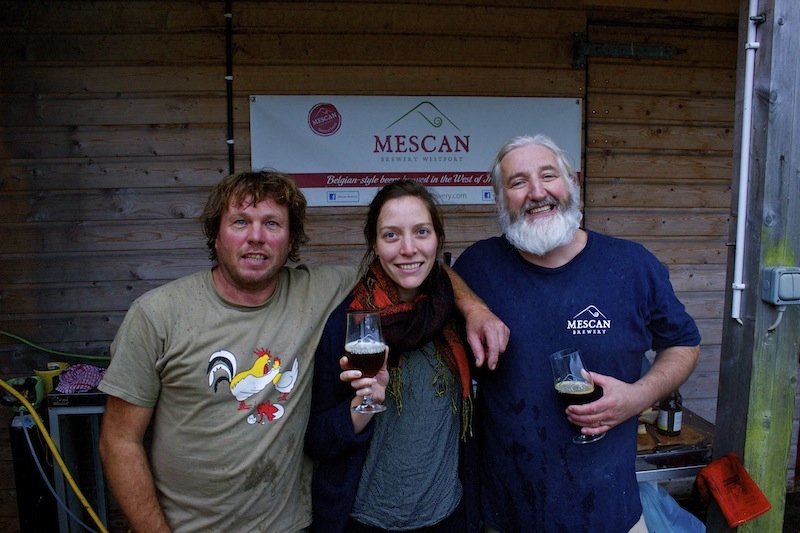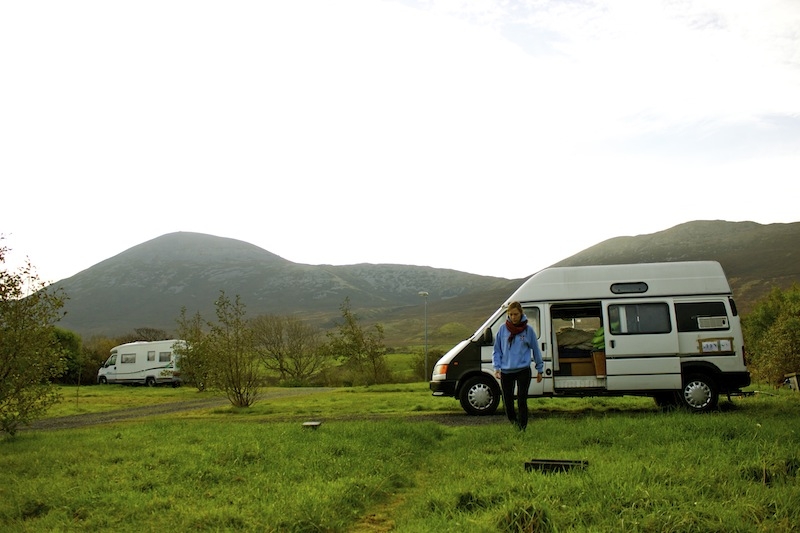Mescan Brewery nestles snugly amidst the stunning countryside of South West Mayo on the slopes of Ireland’s holy mountain, Croagh Patrick – a two man artisanal operation producing Belgian style beer.
The fact that the brewery is located on a small working farm is no coincidence given that the two men who started the brewery are qualified veterinarians.
Cillian O’Móráin, originally from Dublin but who settled in Westport 15 years ago, and Bart Adons, from Genk in Belgium, met while working in the UK as vets. We paid them a visit to find out more about Mescan brewery and their Belgian style beer.
The story, however, can begin in only one place: An sliabh. De berg. La montagne.
We're climbing this bad boy tomorrow. What's on the other side? A brewery…. pic.twitter.com/gpVdlq1XDC
— Belgian Smaak (@belgiansmaak) October 28, 2014
CROAGH PATRICK AND MESCAN
There’s no getting away from the mountain here.
It looms large over everything in the region, providing a magical backdrop to the picturesque town of Westport and rewarding huge numbers of tourists with the breathtaking views of Clew bay and Clare island which are afforded to successful climbers.
In the fifth century, St. Patrick fasted on its summit for forty days. ‘Croagh Patrick’ literally means ‘St. Patrick’s Stack’, although in casual conversation, most of the locals seemed to refer to it as the ‘Reek’.
To replicate St. Patrick’s feat of religious fervour, pilgrims now climb the mountain in their droves, particularly on ‘Reek Sunday’, the last Sunday in July, when the custom is to attempt it barefoot.
Elisa and I decided to wear our climbing boots to make the 764 metres from sea level to the summit and we made it to the top (after only one tea and chocolate break) in just under two hours.
The climb gave us ample time to reflect on the brewery’s name. Mescan was a local priest and a close friend of St. Patrick. He was also alleged to be his personal brewer. Cillian refers to Mescan as being “part of St. Patrick’s entourage”.
A view of Clew bay from Croagh Patrick. Working up a thirst. pic.twitter.com/0paFX6NdS9
— Belgian Smaak (@belgiansmaak) October 29, 2014
But the story of Mescan is intertwined with the mountain in more ways than just its name.
The brewery is set on the slopes of Croagh Patrick and the water they use for brewing comes from underneath the mountain. For a long time, Cillian and Bart climbed the mountain every week to discuss brewing matters, making “the association between the brewery and the mountain even stronger”.
This is all reflected in the brewery’s logo – a beautifully simple but wonderfully creative representation of the mountain and St. Patrick’s staff.
CILLIAN O’MÓRÁIN: THE IRISHMAN
“We are the Galapagos islands of brewing,” says Cillian when we arrive. “We’re out on our own here. That’s not intentional – we just don’t have time to chat to other breweries when we’re working as both brewers and as vets.”
Distribution of their beer remains in the ‘Galapagos islands’ – a handful of pubs and shops near Westport.
Distribution may not always remain local, however, if the high levels of demand for their beer are anything to go on. “We haven’t done any marketing or looked for any buyers, but still we’ve been constantly turning away customers,” Cillian says.
These high levels of demand are probably down to a small trial batch of their Red Tripel that made its way to Dublin without Cillian or Bart knowing. It sold out immediately. They have since been inundated with phone calls asking if they can get more of it to the capital. But they don’t want to be forced to rush batches through (the Tripel takes several months to mature) and they are extremely protective of the beers they release.
When we quiz Cillian on their choice of brewing Belgian style beer, he recounts trips to Belgium with Bart on which they went from bier café to bier café. “We just really love Belgian beer,” says Cillian. “And of course, Bart is from Belgium.”
Conversation turns to the Irish beer market and to the perceived obsession amongst newer breweries of producing very hoppy beers using highly aromatic and high alpha new world bittering hop varieties. “I’m a big Queen fan and on the sleeve notes of their albums, below their list of instruments, they put the words ‘No synthesiser’,” says Cillian. “I’d like to do something similar on the Mescan bottles and put ‘No IPA’.”
The brewery is also a working farm. “We use all of the by-products of brewing to feed stock on the farm,” says Cillian. “There’s no waste. We recycle the used grain and the leftover yeast at the end of a brew by feeding it to stock. The hops are composted and used as fertiliser for the garden. The whole thing is a completely self-contained system.”
BART ADONS: THE BELGIAN
I ask Cillian what the local farmers make of Bart: “They all think he’s from Cavan,” says Cillian.
Bart has definitely got the accent. That’s to be expected – after all, he’s been in Ireland for 14 years. But it’s not just the sounds. He’s picked up all the phrases of a local. He jokes to us about the distinction between climbers of the mountain as “those who do it for Jesus and those who do it for the craic.”
Before meeting Cillian on veterinary business in the UK, Bart spent 13 years in Kenya, Malawi, and Somalia working as a vet. Why did he decide to come to Ireland? “The most similar place to Africa I could find in the world was the west of Ireland,” he says.
Bart’s recent decision to stop practising as a vet and to begin brewing on a more full time basis has as much to do with the changing nature of the veterinary occupation, as it has to do with his passion for beer. Lifting bags of malt and pitching yeast are preferable to embarking on long drives in the small hours of the morning to remote farms to tend to sick animals.
THE MESCAN BEERS
The Mescan range includes four beers.
The ‘blond’ – a pale ale of 5.5% ABV probably designed as a ‘cross-over’ offering for the more conservative Irish drinkers, but with a pronounced ester profile.
The ‘white’ – a traditional wit bier of 5% ABV spiced with coriander and bitter orange peel with a refreshing citrus character (which Elisa loved).
The ‘Westporter stout’ – a stout of 5% of ABV brimming with dark malt and toasted coffee notes (which I loved both from keg and bottle).
Both Elisa and I were in agreement, however, that our favourite was their Red Tripel – an 8% ABV Belgian strong ale. It’s a delicious beer by any standard.
The ‘tripel’ is a style of beer first espoused by one of Belgium’s six Trappist breweries – the Abbey of Our Lady of the Sacred Heart in Westmalle.
It refers not, as many believe, to the beer having been triple-fermented or to there being three times the amount of malt than that of an ‘enkel’ or ‘single’ beer. Rather, it follows a historical system of labeling a beer by strength. You can read more about the birth and development of the style here: Westmalle Tripel: The Sessions #91 (My First Belgian)
One important point of style is that Tripels, almost by definition, are golden. The Mescan Tripel, however, is red, due to the use of a small amount of caramel malt. As such it balances slight sticky toffee flavours with a dried fruit yeast profile. Its well carbonated with a full and creamy mouthfeel and characteristically dry finish.
“It’s a beer style that doesn’t exist, really,” says Bart. “We didn’t want to copy the original golden tripel so we made a red version of it. We didn’t do anything new. We did write our own recipes but they’re all based on existing recipes.”
On every bottle, they have inscribed the number of that particular recipe in numerical order of its conception. It evidences tweaks to their brews to get to where they are now and Bart is comfortable with where they have arrived: “From trial and error, we’ve come up with 4 or 5 recipes that we’re happy to brew commercially,” he says.
A LONG WAY TO THE TOP
Weary legged from our climb but cockles suitably warmed, we jumped back into our campervan and left the shadow of Croagh Patrick in our wake.
Our journey back to Belgium brought reflections on a different country and a different way of life.
Climbing iconic mountains and brewing great beer. Not a bad way to put in the days.


